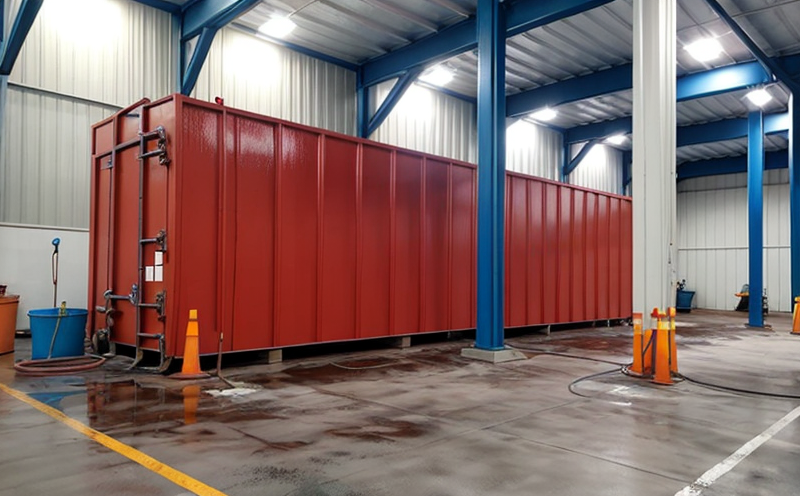ISO 3231 Humidity Resistance Testing of Paint Films
The ISO 3231 standard specifies a procedure for determining the resistance of paint films to immersion in distilled water at elevated temperatures. This test is crucial for quality assurance and compliance in industrial manufacturing, particularly in sectors like automotive, aerospace, and infrastructure where durability under humid conditions is paramount.
Paints and coatings used in these industries are often exposed to harsh environmental conditions that can lead to degradation over time. By subjecting paint films to controlled humidity resistance testing as per ISO 3231, manufacturers ensure their products meet the required standards for longevity and performance under real-world conditions.
The test involves immersing painted specimens in distilled water at a specified temperature (typically 60°C) for an extended period. The specimen is observed for any changes in appearance or properties that might indicate deterioration due to humidity exposure. This method provides valuable insights into the durability and reliability of industrial coatings, helping manufacturers optimize their formulations.
The results of this test are critical for compliance with international standards and regulations. It ensures that products meet the necessary requirements set by industry bodies and governmental agencies. Compliance is essential not only to avoid penalties but also to maintain a competitive edge in the market by offering high-quality, reliable products.
Why It Matters
The importance of humidity resistance testing cannot be overstated, especially for industrial coatings and paints used in environments where moisture exposure is common. This test plays a pivotal role in ensuring the durability and integrity of these materials, which are often exposed to harsh conditions during manufacturing or use.
For quality managers and compliance officers, ISO 3231 testing provides a standardized method to assess the performance of paint films under controlled humidity conditions. This ensures that products meet international standards and regulations, thereby reducing the risk of non-compliance penalties.
R&D engineers benefit from this test by gaining insights into how different formulations perform in real-world scenarios. The data obtained can be used to refine product designs and improve overall quality. For procurement teams, knowing the results of these tests helps them make informed decisions about suppliers and materials that meet stringent standards.
Scope and Methodology
| Parameter | Description |
|---|---|
| Test Specimens | The specimens used in this test should be representative of the paint films being evaluated. They are typically prepared by applying a uniform coating to a suitable substrate. |
| Immersion Medium | The immersion medium is distilled water at 60°C, chosen for its neutrality and ability to simulate real-world humidity conditions effectively. |
| Durability Assessment | Specimens are immersed in the water bath and observed over time. The test duration can vary depending on the specific requirements but is generally set at 100 hours for most applications. |
| Evaluation Criteria | The evaluation criteria include changes in color, gloss, adhesion, and other physical properties that may indicate degradation due to humidity exposure. |
International Acceptance and Recognition
- The ISO 3231 standard is widely recognized in the industrial manufacturing sector, particularly for automotive, aerospace, and infrastructure projects.
- This test is often required by international regulatory bodies to ensure compliance with specific environmental standards.
- Many industry associations recommend this method as a best practice for assessing paint film durability under humid conditions.
- The results of ISO 3231 testing are accepted globally, making it an essential tool for exporting products and gaining market access in various countries.





